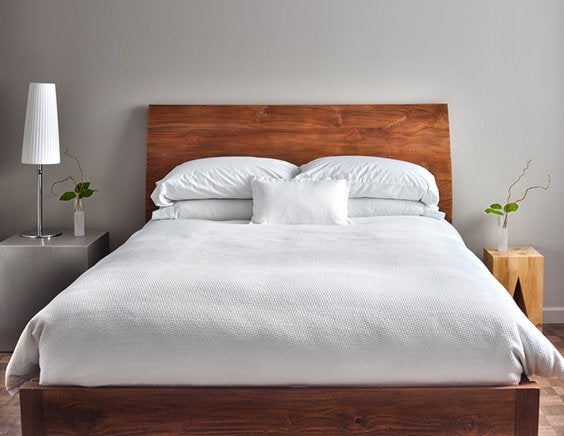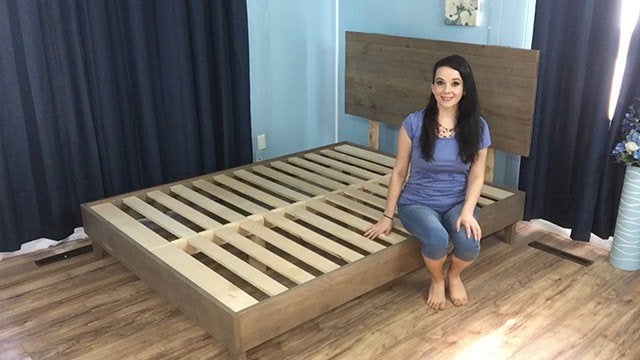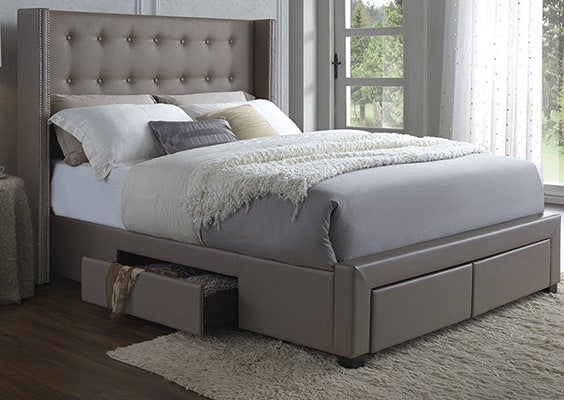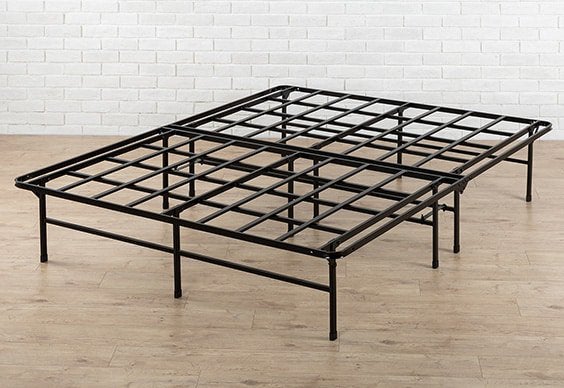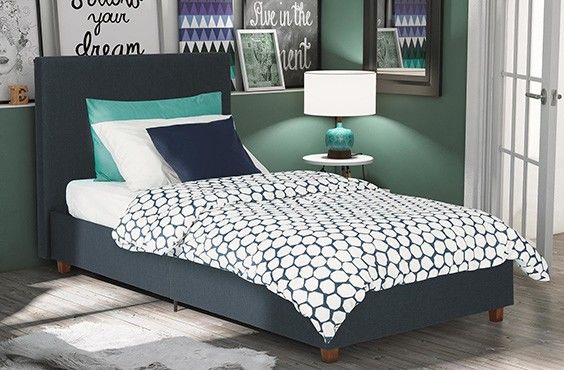When a person hears the term “hammock” what generally comes to mind is sunny vacations, laying on a beach with a fruity cocktail in hand, a gentle breeze rustling your hair and a lack of responsibilities and deadlines weighing on their mind.
If you find yourself looking to purchase a new bed, whether it be the bed frame, headboard, mattress or just a new mattress for your existing bed, a hammock doesn’t usually find itself on the list. Specialists, however, are starting to find a correlation between solid sleep and hammocks, due to the rocking motion provided. Clinical studies proved that some people find they slept deeper while maintaining a supportive position for their body.
Food and water are the top sources of food for the body and mind, but sleep is just as important. Sleep helps heal the body from physical ailments, while energizing the mind, allowing our daily living to be a breeze.
If you find yourself intrigued about sleeping in a hammock or want to confirm a bed is still your best choice, read down below through each labelled section for a comprehensive brief of the facts.
What is a Hammock?
A hammock is loosely described as a bed constructed using either canvas or rope mesh while being suspended mid-air and supported by a series of connected cords to a base. The cords are located at either end of the hammock and are usually supported by trees (when located outside) or sunken posts (when located inside). The sunken posts could be built into a wooden frame with a cohesive material situating the posts inside for a lack of movement.
Hammocks are suspended mid-air to the desired height to stimulate a “rocking” motion, similar to a boat at sea. There are mattresses available for hammocks to provide additional comfort and body support. Hammocks have a curved top and bottom section, which will prevent pillows and blankets from moving or falling during slumber.
Benefits of a Hammock
Studies have proven there are benefits to trading in your bed for a hammock ranging from physical and mental perks.
Hammocks can alleviate back pain when in the proper position. Hammocks force the user to maintain a back sleeping position while leaving the legs and torso stretched out completely. People tend to hunch over while on a computer or doing other basic tasks during the day and they can mimic this positioning during slumber. A hammock can provide a basic stretch of the body, loosening tight muscles and aligning the spine.
The majority of healthcare professionals that specialize in the back and spine regions agree that the ideal sleeping position is on your back. Hammocks allow the user to not only fall asleep faster but also allows them to relax into a deeper sleep. The body and mind can run rapidly the longer you are awake, causing tossing and turning throughout the night, disrupting sleep.
The gentle rocking motion of a hammock can also stimulate the same feeling of being rocked as a child, which relaxes your mental state and reverts yourself back to simpler times. This relaxed, peaceful feeling will follow you through your daily routine.
Downsides of a Hammock
As popular as sleeping in a hammock is becoming, there are some unfortunate sides of it as well. Hammocks are beneficial when set up in the correct position, with just enough tightness in the cords to prevent sags but not tight enough to create a springboard of material. Improper positioning of the hammock can lead to additional body aches that you are already experiencing.
Hammocks can also pose a hazard if you are the type of sleeper that moves constantly throughout the night. A person sleeping in a hammock has a higher risk of falls than the person that spends their night in a stationary bed which provides no movement. If the hammock isn’t bolted in a supportive place, either with a frame or even into wall studs, added weight can cause them to collapse.
The mattresses that are available to fit into a hammock are generally thinner to avoid overlap on the edges. They are also designed for solo sleep which can lead to issues if you share your bed with a partner. Two people in a hammock can be uncomfortable when your body is forced to sleep in a “back only” position. Cuddling or other activities can cause the hammock to tip over, sending the occupants crashing to the floor.
What is a Bed?
Beds are stationary frames that support a mattress, box spring, along with a headboard and footboard if applicable. They are the more common item used for slumber, with sales worldwide. People can sometimes confuse a bed and mattress, believing they are the same thing, when actually the bed is the piece of furniture on which the mattress rests.
Bed frames can be made from metal or wooden materials or sometimes a combination of both. They are rectangular frames with a center of slats or interwoven material to provide a cradle for the mattress.
Benefits of a Bed
There is a reason that a bed has been and continues to be the trusted sleeping object of choice globally. A bed will not move in position unless the sleeper physically pushes the frame to a new location. The worry of not falling can ease a person’s mind, lessening the chances of waking up throughout the night.
Depending on the style of bed chosen for your bedroom, you can create multiple storage options, whether through a raised style with open space between the frame and floor, or a style with built-in drawers of various sizes.
The options for raised sections are available in a bed, whether you need to have your neck at a certain height or prefer to elevate the legs. There are thousands of options for mattresses to best suit the needs of the individual and even ones available that set to the preferences of dual occupants.
Downsides of a Bed
Beds are not without their cons, as nothing in this world is 100% perfect. A bed can take up ample space in the bedroom, and people generally have to decorate around their bed.
Beds offer little to no circulation, which can form a breeding ground for bacteria and dust mites. This bacteria and/or mites can lead to numerous ailments of the body, from infection to respiratory illness. Allergy sufferers may find a bed and mattress combination increases flare-ups, due to the lack of air throughout the material.
Hammock vs Bed Comparison Table
| Hammock | Bed |
|---|---|
| Can alleviate back pain | Stationary object that provides comfort and support |
| Creates a rocking motion, similar to a baby in the womb | Additional storage for the bedroom |
| Needs a smaller space to set up | Range of options for mattresses, providing support and comfort to the body |
Conclusion
Regardless of the popularity of a style of sleeping furniture flooding media today, ultimately the best one to decide on what will benefit you the most is YOU. When a person spends approximately 1/3 of their lifetime sleeping, shouldn’t it be in style and comfort?
Why spend your nights depriving your body and mind of precious fuel creating sleep to match the latest trend or listening to what others tell you. Consult a medical professional, talk to experts, and listen to consumers to gather research, but make sure the final decision is yours.
You might be interested in: 12 Simple Tips To Prevent Bed Head

